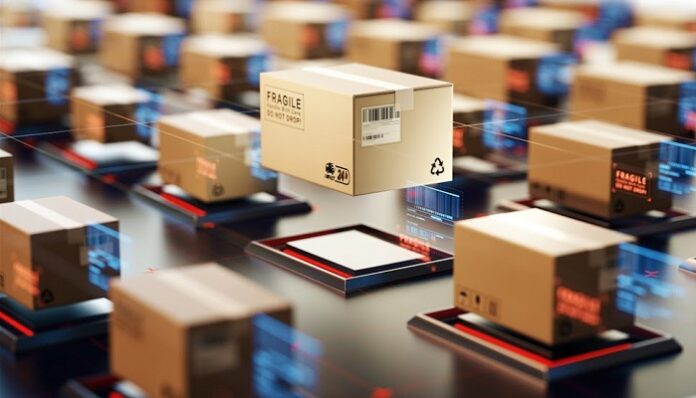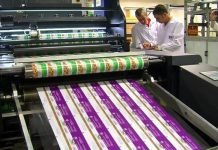Five important themes are expected to have a significant impact on the worldwide consumer packaging sector over the course of the next 12 months, according to a conference recently held by GlobalData. The five themes are as follows:
- ESG (environmental, social, governance)
- Digitalisation
- Robotics
- Cybersecurity
- Easy & affordable.
ESG, digitalization, and robots, according to GlobalData researchers, will be the three most significant trends for your company in the future.
The researchers stated that 2022 would be characterised by changes in every industry and called it a “perfect storm” for firms. Nearly 300,000 tonnes of rice were destroyed by flooding in Pakistan, the crisis in the Ukraine had an impact on the European market; and heatwaves in Canada and China had an impact on harvests and led to water shortages in some areas.
Global supply chains had difficulties as a result of the interruptions, and consumers also felt the burden. Consumer behaviour also changed as a result of the high inflation rates, with some returning to pandemic-like behaviours such as cocooning, reducing driving, buying in bulk, and stockpiling.
ESG
According to figures from GlobalData, 77% of customers worldwide consider environmentally friendly or sustainable characteristics to be either necessary or desirable to have. Additionally, according to the study, 56% of customers worldwide strongly or somewhat concur that they want brands to aggressively address social concerns on a global scale.
Increased regulation will have an impact on firms, according to a GlobalData B2B attitude survey.
In order to effectively manage risk, packaging companies, according to experts at GlobalData, should communicate and follow a concise sustainability plan. They go on to say that since consumers prefer recyclable packaging and regulators are putting more emphasis on reusability, striving for a closed-loop supply chain is optimal. Because climate change is only going to get worse, a packaging company’s ESG qualifications will progressively define its relationship with customers, investors, and regulators, according to GlobalData associate analyst Rory Gopsill.
Consumers, authorities, and investors will put more pressure on packaging businesses to lessen their environmental impact. He continues, “Those who can strengthen their green credentials the most will experience the least pressure and, eventually, continue to be more profitable.
Digitalisation
Consumer goods companies can gain deeper levels of visibility into their entire value chain of operations thanks to digital technologies. Artificial intelligence (AI), 5G, the Internet of Things (IoT), and AR/VR (augmented reality/virtual reality) are among the most impactful technologies now available, according to GlobalData researchers.
By 2035, supply chains are predicted to be entirely automated and digitalized, and more local activities will be scaled up using organic and non-organic printing, which will lessen the need for long-distance transportation. Businesses are turning to solutions like D2C (direct-to-consumer) for access to customer data, social media to boost exposure, and AI to improve process efficiency as a result of these practises.
Companies like US corrugated packaging manufacturer Westrock and packaging solutions provider Tetra Laval are advertising for employment in the area, indicating that the rate of hiring in the packaging industry related to digitalization is increasing. The analysts also draw attention to the volume of corporate filings that show the packaging industry prioritises digitising operations. In fact, between January 2018 and August 2022, five of the ten top packaging companies made over 200 mentions of digitalization in their filings.
Digitalization underpins automation, unlocks the potential of eCommerce, and enhances corporate operations based on data analysis, according to Gopsill. It is crucial in the short term because of the impending recession, which makes boosting efficiency even more crucial. Customers will find digitised packaging enterprises to be more financially and operationally appealing over time as a result of their ability to create goods more affordably and with eCommerce capabilities.
Robotics
The third major trend that packaging professionals should be aware of now and in the future is robotics. This area of technology is concerned with the creation, use, and deployment of robots. Robotics has been a significant tool for assisting humans by removing manual labour, reducing costs, and raising precision.
Robotics is thus growing in significance as a trend. Robots can work together and access vast amounts of continuous data thanks to technology like cloud computing and AI, which has several benefits for organisations. For instance, the use of packaging to enhance automation and supply chain management has increased.
Robotics will be essential to the automation of factories and warehouses during the next ten years, according to Gopsill. In any economic climate, particularly the one that exists right now, cost savings are excellent. The rapid increase in recruiting for robotics-related positions in the packaging industry has been associated with the relevance of robots. As packaging businesses hire more staff to install and manage robots, GlobalData researchers observe that every quarter of 2022 has seen more hiring connected to robotics than any of its contemporaries.
Even though digitalization and robots seem to have a lot in common, Gopsill thinks that digitalization will have a bigger effect on packaging because it uses more technologies than robots.
These technologies support eCommerce and industrial automation, he claims. One technology is robots. It can automate operations in production and warehousing, therefore it is frequently incorporated into packaging businesses’ digitalization ambitions. The researchers also identify simple and affordable and cybersecurity as two other top topics affecting the global consumer sector.
Global disruptions like the conflict in Ukraine have raised concerns about cybersecurity and put enormous demand on resources, pushing up market prices that are felt by both consumers and businesses. Companies are increasingly placing a higher priority on efficiency and affordability in reaction to price inflation by employing personnel who can increase their cost-efficiency.

























